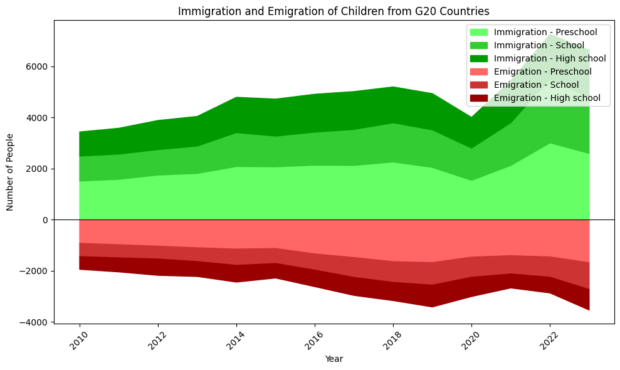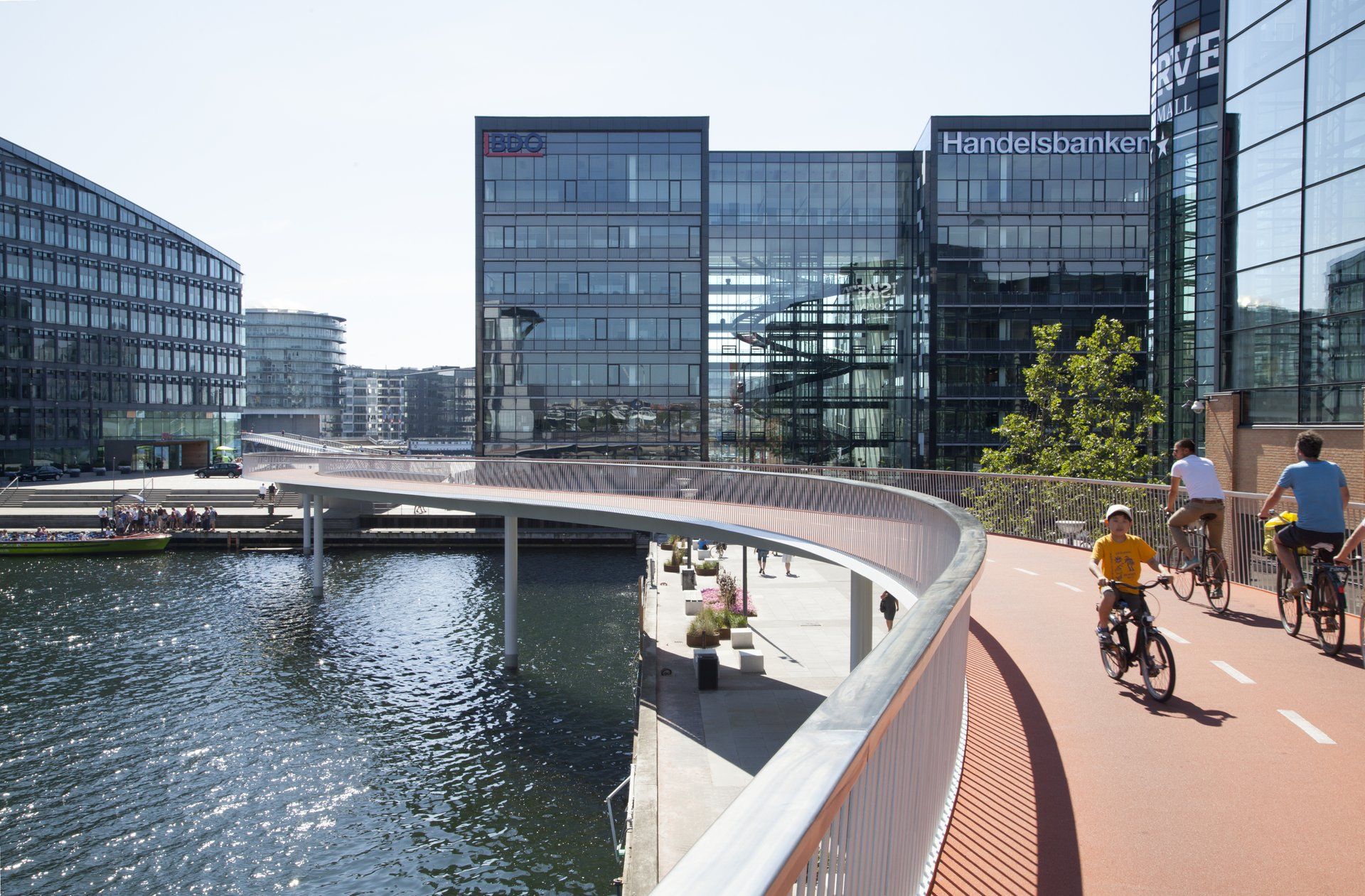If Denmark did not exist, other countries would need to make it up. Imagine a land with a social security safety net! Good standard of living! Excellent place to bring up children!
The difficulties and logistical challenges of moving country will be outweighed by what you stand to benefit from being resident in a Scandinavian socialist paradise, if the travel memoirs are to be believed.
Many people every year choose to move to Denmark and Denmark in turn spends a lot of money to attract and retain this international talent. Are they staying though? If they leave, do they go home or elsewhere? Looking at raw figures, we can see that Denmark is gradually becoming more international but not everyone is staying.
Why are internationals leaving Denmark?
Net migration over time is one part of the picture: how many people immigrated minus how many people emigrated. Countries with higher net migration to Denmark over 2014-2023 include India, Poland and Ukraine for example.
This is interesting from the point of view of living in Denmark, as you are more likely to meet someone from those countries and hear their languages on the streets but it does not tell you much about how well Denmark is retaining people proportionally speaking.
Another interesting measure is to look at how net migration compares to the number of immigrants in total.
For countries with relatively high immigration, Denmark is better at retaining internationals from countries such as Eritrea, Syria and DRC and less good at retaining internationals from countries such as Estonia, Somalia and the USA.
In the case of the USA, many Americans are persuaded to immigrate to Denmark but a high proportion go back to the USA again. This is astonishing, given that moving continents is expensive and energy intensive.
Denmark has tough immigration policies with high barriers to permanent residency and citizenship but the people who are staying long-term come from places that are hard to go back to because of political instability and hold passports that require visas for visiting other countries. In other words, they do not have as many options.
The people most likely to leave due to the tightened rules around foreigners are exactly the ones that Denmark spends so much money and energy trying to attract. Even internationals from the EU and the Nordic region, who have an easier time of it with immigration red tape, are also leaving Denmark in relatively high numbers.
Serial expats: Denmark is just one stop
Many internationals are “serial expats”, who plan to settle short term in new countries and move on within a couple of years. If we take a look at the onward destinations where people are not simply “going home”, there are two bordering nations: Sweden and Germany, three anglophone nations (UK, USA, Canada) and a couple of Spanish speaking countries (Spain and Argentina), plus the Netherlands, Norway and Switzerland.
Digging a bit deeper into why Argentina is so attractive to foreign nationals, many Italians have moved to and from Argentina since 2018. This is mysterious unless you know that a lot of Argentinians have Italian heritage and hold Italian (and therefore EU), passports.

The figures for emigration to Sweden in 2023 are suggestive that many people who work in Copenhagen are moving across the bridge and commuting to their jobs. Whether this is a net gain or net loss for Denmark financially, is hard to say but it indicates dissatisfaction with Denmark.
In 2023, over 50 000 internationals emigrated from Denmark, including nearly 8000 under 20s. A significant minority of those were Ukrainians, but the rest of the under 20s were from countries such as Germany, Poland, Iceland and India.
Is Denmark really the best place to raise a family?
Looking at migration patterns of children from the G20 economic block, the immigration and emigration figures of preschoolers are both very high.
Families are being persuaded to bring their very young children to Denmark but are not being retained. Immigration of school aged children and teenagers is lower.

Net migration of this age group is increasing but modest. There is some progress to be made in keeping international families happier in Denmark to encourage them to stay.
Denmark is known as a good place to bring up children but it is hard without a network to help with emergency childcare. If you are expecting baby #2, who will watch your firstborn when you go into labour? Who will take care of your child if he is sick for more than one or two days? Perhaps these figures are related to the falling birth rate of Danes, maybe Denmark is not as an attractive a country to start a family as it used to be.
Looking at raw migration figures is telling but the extra nuance of a closer look gives a fuller picture. Families are moving to Denmark but many are moving away. Net migration from the USA is steadily increasing but there is potential for a higher increase, given how many immigrate every year.
To capitalise on its appeal, Denmark must ensure internationals can build lasting lives here and contribute to the society they were attracted to in the first place. The question remains: how can Denmark better support those it works so hard to attract?



